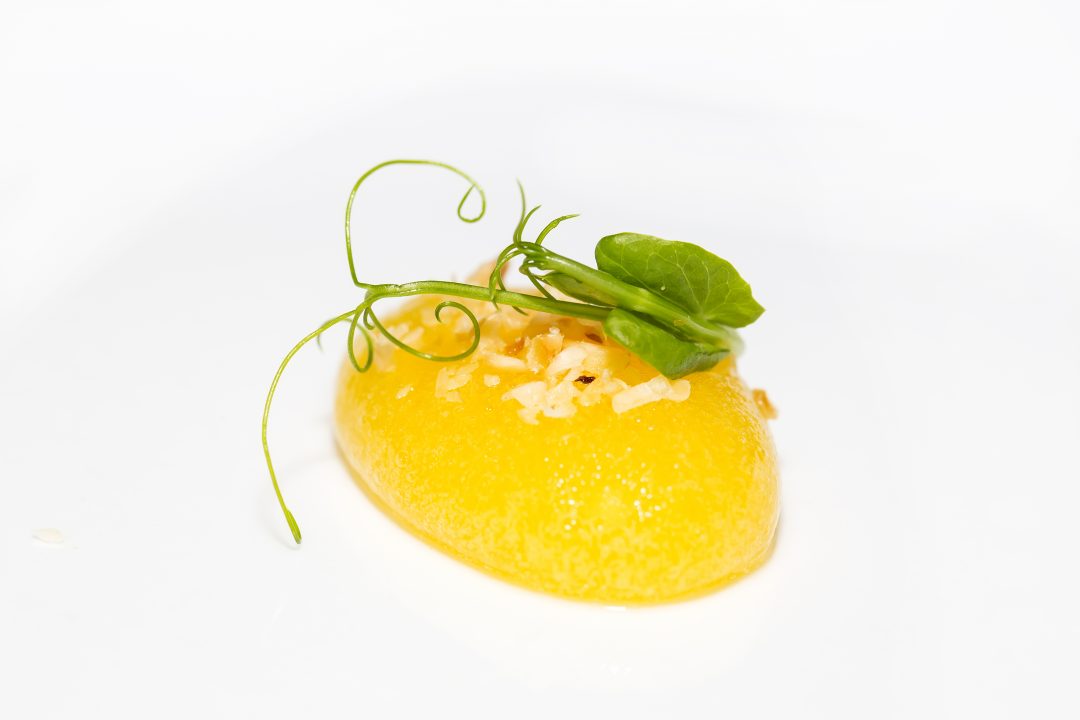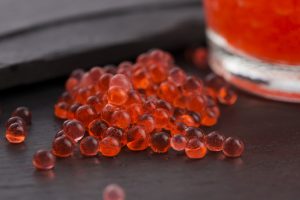How about you forget everything you know about food and ask for your next meal in Spherification.
A new food frenzy taking the world by storm is having your food in a bubble. Spherification is the process of solidifying liquids, turning them into edibles. The technique was was actually developed by Unilever in the 1950s, but have only recently made it to modern cuisine.
The solidification is usually made using sodium alginate, and either calcium chlorate or calcium glucate lactate, which visually and texturally resembles roe. There are two main ways for creating spheres, which differ based on the calcium content of the liquid product to be spherified.
For foods with flavors, like juices, teas, and nectar, the liquid form of the food is mixed carefully with a little powdered sodium alginate, then dripped into a bowl filled with a cold solution of calcium chloride, or other soluble calcium salt. It only takes a small drop of liquid to form a sphere. When the liquid is dropped into the calcium solution, within few seconds to minutes, a soft flexible skin coat will form, trapping the liquid inside. Newer techniques, like reverse spherification, which is used for products with high acidity or alcohol, uses freezing before dipping.
No matter the technique, the end result is mostly the same, a liquid filled gel ball which is ready to eat.
The method have attracted popularity as several restaurants and chefs use spherification to create signature desserts and jelly-bubble drinks. If you want to try it for yourself, you can search the web for the closes restaurant offering spherified foods around you, or order a home spherification kit online.





